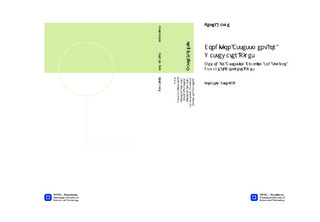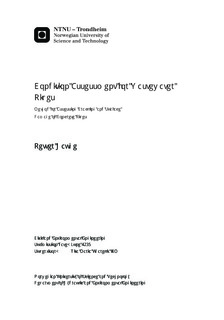| dc.description.abstract | The objective of the Master Thesis has been to provide an improved method for condition assessment, which will give a better correlation between Condition class and actual Condition of concrete pipes with cracking and/or surface damages. Additionally improvement of the characterization of cracking (SR) and surface (KO) damages was a sub goal.Based on the findings described in my Thesis and my Specialization Project (Hauge 2012), I recommend that the Norwegian condition assessment method based on NV150, is revised.The revised condition assessment should focus on the severity of the damages based on measurable damage thresholds. According to NV150 cracks are not characterized and graded based on the measured crack width (see Table 2.2 and Table 2.3). There is no evaluation of the loads and forces influencing the pipe deterioration. My Specialization Project concluded that The Norwegian method gives too little weight to severe single damages when the pipe length exceeds 40 meters, and gives too high weight to distributed damages, as the condition score is very dependent of the damage length (Hauge 2012).These facts show that adjusting the formula (Equation 2.2) for condition score calculation or the damage grade system (Table 2.4) in NV150 is not enough to improve the condition assessment method.I recommend that a new way of assessing the pipe conditions, founded on research-based damage thresholds in the context of pipe deterioration processes is further developed.Through this Thesis I have been able to establish damage thresholds for crack width and calculate critical strength in a pipe with decreased wall thickness (chapters 6.1 and 6.3).I have developed a general method of assessing the loads and forces influencing a pipe without doing inspection, which I have defined as indirect condition assessment (ICA). This method can be used to assess how critical the influencing loads are. It can also be used to correct uncertain condition classes of observed damages defined by NV150.Also I have developed a method of assessing the observations made through inspection defined as direct condition assessment (DCA). This method is an enhanced assessment of cracking and surface damages which are observed in a pipe.A total assessment with both these two methods (ICA and DCA) is expressing the actual pipe condition better and more precise than the NV150. To improve both the ICA and DCA further research is needed, and the following research topics can be listed based on the findings in this thesis:Available tools like Norwegian Road Data Base (NVDB, see chapter 6.2.2) should be used to develop the ICA tool for traffic load assessment. The actual correlation between traffic load influence and YDT-L should be studied more closely. Also critical cover heights for all pipe sizes and dimensions should be calculated for ICA fill load input.The use and implementation of new technics for trench and pipe bedding inspection, like geophysical methods, should be studied. Information about the bedding and side filling support on a pipe is very important to assess to be able to estimate loading and forces on the pipe. Equipment for accurate measurement of cracking and internal diameter (wall thickness) should be developed. This information is needed for the estimate of critical fill load as motioned above, especially when the critical cover height decreases due to reduced wall thickness. The production of sulfide in Norwegian sewer environment should be studied to determine critical retention time in pumping and pressure mains. Inspection robots can be equipped with gas sensors. All possible sources should be registered and their activity and sulfide production evaluated. This will give a basis to understand the correlation between pipes affected by sulfuric acid attacks and the possible reason for this.Hopefully the method developed and presented in my Master Thesis will be a useful contribution to the DiVA Project and future condition assessment of wastewater pipes. The DiVA Project is financed by the Norwegian Research Council (NFR). | nb_NO |

